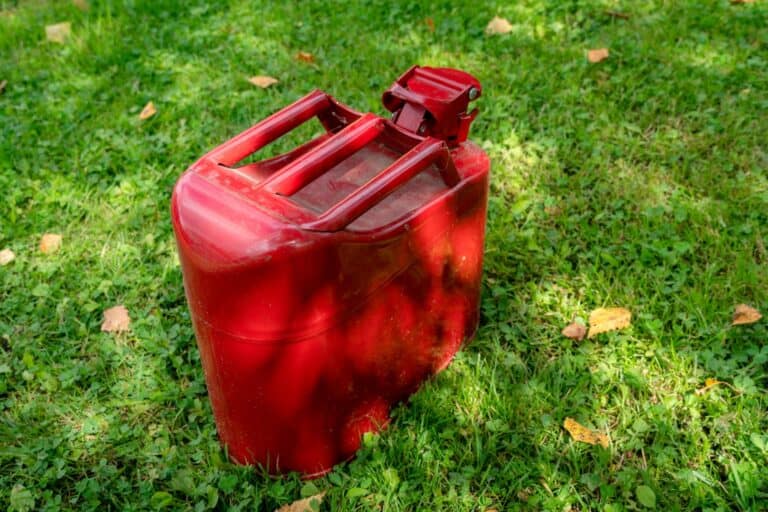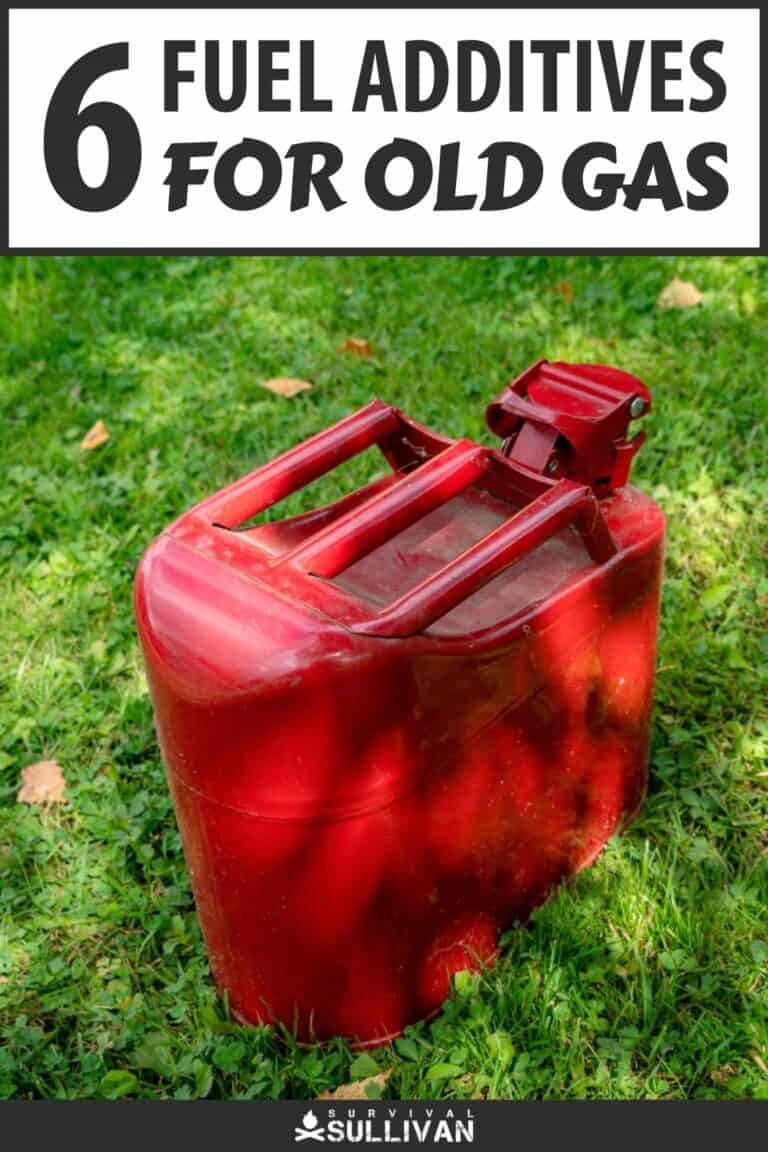

Whether you are keeping fuel on hand as part of a long-term prep in case of infrastructure collapse, or you just need some ready to go for your lawn mower or tools, rotating your gas can be a major pain.
That’s because modern gasoline tends to go bad quickly, especially the stuff with ethanol in it…
If you use old gas, at best, it just won’t work. At worst, it can wreck your engine or your fuel system. Definitely not good!
But luckily, scientists and clever manufacturers have cracked this problem through the use of additives designed to support the use of old gas.
From eliminating water and restoring octane rating to stabilizing your stale gas before it gets too old, there is something for every application.
I’ve brought you six of the best ones below…
Pros and Cons of Fuel Additives
Pros
- Can dramatically extend shelf life of gas, even ethanol blends, up to 1 year – sometimes longer!
- Additives can keep “stale” gas from degrading to point of uselessness.
- Detergents and other chemicals can prevent older gas from gumming up or harming engines – cheap insurance when working with older supplies!
Cons
- Some products must be carefully measured and added for proper function.
- Octane additives can make gas too “hot,” potentially damaging engine or specific components.
- Using additives increases cost of fuel supplies.
1. Sea Foam Motor Treatment
Sea Foam is a legendary name in fuel additives, and they have something designed for engines large and small on land or at sea.
Their flagship product, motor treatment, is designed to stabilize gasoline and diesel fuel alike for up to 2 years, and that is for any blend of gasoline or diesel.
I know most all-in-one products absolutely suck, but somehow those Sea Foam engineers used witchcraft or cutting-edge chemistry (or both) to make it happen.
Their Motor Treatment formula is advertised as not only stabilizing your fuel, but also:
- cleaning your injectors and carburetors,
- cleaning intake valves and fuel chambers of deposits,
- lubricating cylinders,
- and even being a useful additive for crankcase oil since it can reduce and eliminate damaging built up deposits.
Best of all, it’s easy to use, just pour it straight into your tank, 1 oz for every gallon of fuel for regular use, or 2 oz per gallon for serious cleaning.
Added directly to store fuel, 1 oz per gallon will stabilize your fuel, of any kind, for up to 2 years. Amazing stuff, and my granddad used it so now I use it. Recommended!
2. Lucas Oil Fuel Stabilizer
Lucas Oil Products is another huge name in the automotive game, and their fuel stabilizer does exactly what the name says: this little blue bottle will prevent your fuel from decaying during storage.
Even if your fuel is getting a little stale, Lucas’s fuel stabilizer can halt the damage.
Even better, this stuff has a reputation for lubricating, cleaning, and improving the performance of fuel pumps and carbs and also your compression rings.
It is easy to use, just one fluid ounce to every 2.5 gallons of gasoline and that’s all you have to remember.
It can be used for any grade or octane rating of gasoline and is also safe for two- and four-cycle small engines.
A medium-sized bottle will go a long way, treating up to 40 gallons of gasoline. Suitable for the largest of fuel tanks, or nearly a whole barrel full of gasoline.
Available anywhere, cost-effective and easy to use. What’s not to like?
3. Lucas Oil Octane Booster
What are the problems associated with old gasoline is a loss of performance because the volatile compounds that give the gas its bang start to decay and break down.
This means that the octane rating of the gas decreases over time. One way to reinvigorate your gas is to simply add new gas to it, but that can be a finicky and imprecise measure.
A better way to do it, especially if the gas isn’t too far gone, is to just reach for Lucas Oil’s octane booster.
Ready to be completely safe for modern oxygen and fuel system sensors and all catalytic converters, it can resuscitate old gas and no time flat.
Note that you’ll want to pay attention to the instructions, as it advises you to add an entire bottle into your tank, with the size of the bottle being dictated on the size of your tank, and then filling the tank all the way up with fuel.
However, with a little bit of math, you can add it to your old gas and mix it or slosh it to combine them.
4. STA-BIL Fuel Stabilizer
One of the very best and most beloved names in the fuel additive game is stable, and their storage fuel stabilizer definitely does what it says.
If you have old gas in a can or in the tank of your car, motorcycle, boat, other vehicle, or power tool this is what you need.
When your gas is starting to get stale, but before it goes totally bad, you can add Sta-Bil to it to keep it fresh, safe, and usable for up to a year.
It also has many useful additives that will prevent the formation of gum-producing compounds in the gas which will subsequently cause your fuel system and lead to a devastating repair bill or even damage to your engine.
Corrosion-stopping additives further protect your engine and fuel system from degradation.
It works great, and you can get it anywhere, but make sure you pay attention to the instructions.
Sta-Bil recommends different dosages depending on how long you anticipate the fuel will sit before it is used, so you might add more or less per gallon depending on your storage goals.
5. STP Water Remover
STP is another long-time player in the fuel additive game, and one of their best products is their Water Remover.
If you don’t know better, it might sound a little strange considering we were talking about gasoline.
But, once you know about the physics of gasoline, and especially ethanol blend gasoline, you know how insidiously that stuff attracts water.
Especially in warm, humid weather, condensation forming in your gas can rapidly degrade it.
I colder weather, when your car is taken from outside to a warmer location or allowed it to cool down in the garage, condensation can likewise form and subsequently freeze in your fuel line.
Definitely a problem, that. And just as importantly, water tends to build up rapidly in old gasoline.
All you’ll need to do is add a little bit of Water Remover to your gas, and you won’t have a thing to worry about.
This is a great additive for older fuel that is still reasonably fresh, but has been stored in conditions that are favorable to the formation of condensation.
6. Star Tron Enzyme Fuel Treatment
One of the best all-around additives for old fuel, whether it is in your tank or in a can, is Star Tron’s Enzyme Fuel Treatment.
Using a unique blend of chemicals and enzymes, it will allow your engine to start easily, safely, and smoothly when using ethanol gas blends that have been sitting for some time.
This product will promote better performance with older gasoline, and it can be used on your newer gas to keep it stable and fresh for 2 years without any worries of varnish formation or phasic separation that normally plagues modern gas.
Best of all, it’s adaptable for pretty much any gas engine you can think of, for passenger vehicles, motorcycles, small engines and tools.
Even better, the company promises that “overdosing” your fuel with this product won’t result in any damage or serious decrease in performance.
If you always sweat the math when working out the ratios of additive to fuel, this might be the one you want to go with.
Easy to use, highly effective, and multi-purpose for old gas in or out of your vehicle this is one of the more user friendly products on the market.


Tom Marlowe practically grew up with a gun in his hand, and has held all kinds of jobs in the gun industry: range safety, sales, instruction and consulting, Tom has the experience to help civilian shooters figure out what will work best for them.

